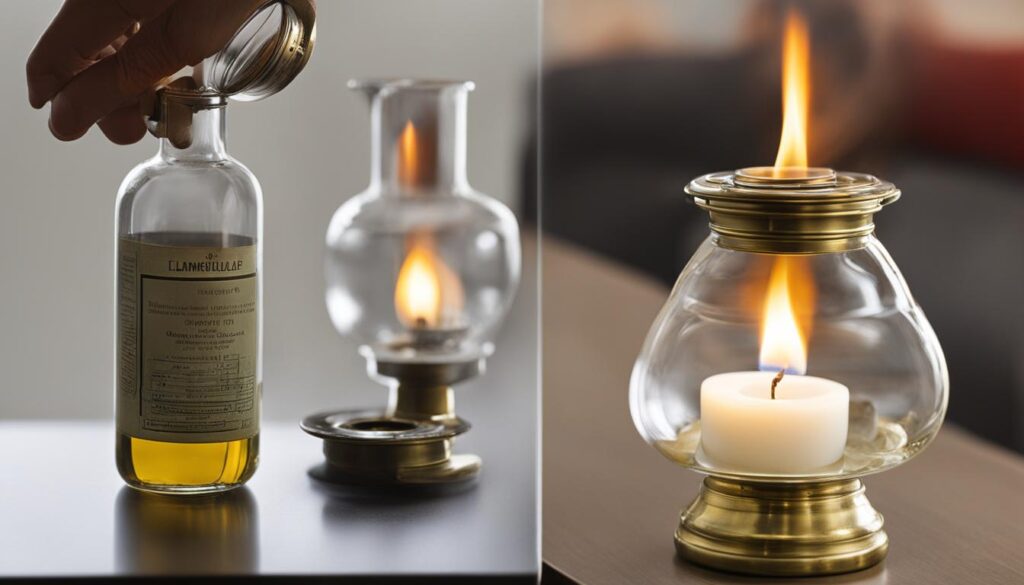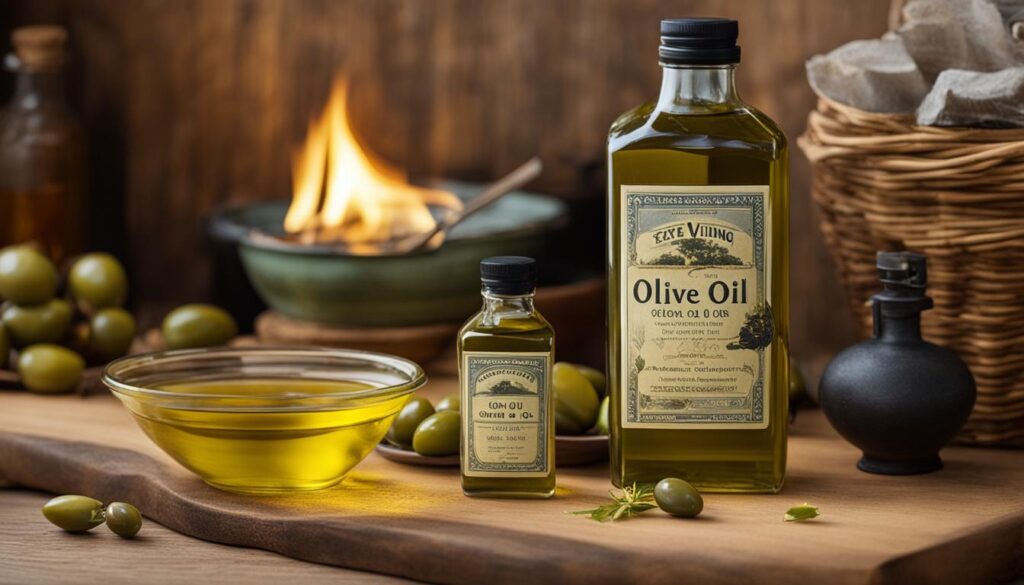Welcome to my comprehensive guide on how to use an oil lamp safely. Oil lamps, with their long history and unique design, provide a nostalgic and cozy lighting option for your home. In this guide, I will walk you through the basics of using an oil lamp, from understanding its components to selecting the right fuel and maintaining it properly. I will also share essential safety tips to ensure a secure and enjoyable experience. So, let’s dive in and discover how to master the art of using an oil lamp!
Understanding the Components of an Oil Lamp
An oil lamp is a fascinating device that relies on several components to produce light. Understanding how these components work together is crucial for safe and effective use of an oil lamp.
The Wick
One of the key components of an oil lamp is the wick. Made from materials like linen or papyrus, the wick serves the crucial function of drawing fuel up to the flame. As the wick absorbs the oil, it creates a capillary action that allows for a continuous supply of fuel.
The Fuel Reservoir
The fuel reservoir is another essential component of an oil lamp. This reservoir holds the oil, which serves as the source of fuel for the lamp. Fuel reservoirs can be made from various materials such as clay, glass, or metal, each offering different aesthetics and functionality. The size of the reservoir determines the duration of the lamp’s burn time.
The Air Supply
To sustain combustion and maintain a steady flame, an oil lamp requires an adequate air supply. The air supply allows oxygen to reach the flame, ensuring proper combustion of the fuel. Depending on the design of the oil lamp, the air supply can be regulated through adjustable vents or openings near the flame.
By understanding the wick, fuel reservoir, and air supply, you can gain a deeper appreciation for the mechanics of an oil lamp. This knowledge will not only enhance your understanding of how to use an oil lamp effectively but also enable you to troubleshoot any issues that may arise.
Selecting the Right Fuel for Your Oil Lamp
When it comes to using an oil lamp, selecting the right fuel is crucial for both efficiency and safety. There are several options to consider, each with its own advantages and considerations.
1. Olive Oil
Olive oil has been a popular choice for fueling oil lamps for centuries. It burns cleanly and produces a pleasant, subtle scent. It is readily available and can be found in most households. However, it may not burn as brightly or as long as other fuel options.
2. Kerosene
Kerosene is a commonly used fuel for oil lamps due to its high energy content. It burns brighter and longer than olive oil, making it ideal for situations where more light is desired. However, kerosene emits a strong odor and should be used in well-ventilated areas. It’s also important to handle kerosene with care, as it is flammable.
3. Vegetable Oil
If you prefer a more eco-friendly option, vegetable oil can be used as an alternative fuel for your oil lamp. It is a readily available and affordable option. However, keep in mind that vegetable oil may burn with more smoke and produce a less intense flame compared to olive oil or kerosene.
When selecting a fuel for your oil lamp, it’s essential to consider factors such as brightness, burn time, scent, and safety. It’s also important to follow any specific fuel recommendations provided by the manufacturer to ensure optimal performance and avoid any potential hazards.
Maintaining and Troubleshooting Your Oil Lamp
Proper maintenance of your oil lamp is crucial for its longevity and safe operation. By following a few essential steps, you can ensure that your lamp stays in good working condition.
Cleaning the Oil Lamp
To keep your oil lamp functioning efficiently, regular cleaning is necessary. Start by extinguishing the flame and allowing the lamp to cool down. Carefully remove the chimney and wipe away any soot or residue using a soft cloth. Next, clean the fuel reservoir by pouring out any leftover oil and wiping it clean. Clean the wick holder and adjuster mechanism, if applicable, by removing any dirt or debris. Once everything is clean, reassemble the lamp, and add fresh fuel.
Replacing the Wick
Over time, the wick in your oil lamp will wear out and need to be replaced. To do this, start by thoroughly cleaning the lamp as mentioned earlier. Then, carefully remove the old wick, making sure not to damage the surrounding parts. Trim a new wick to the appropriate length and insert it into the lamp. Allow the new wick to soak in the fuel for a few minutes before lighting. Regularly replacing the wick will ensure a steady and efficient flame.
Troubleshooting Common Issues
If you encounter any issues with your oil lamp, understanding common problems and their solutions can help. For example, if your lamp has a flickering flame, it could be due to a dirty chimney or a wick that needs trimming. Excessive smoke can result from a clogged wick or using the wrong type of fuel. Difficulty in lighting the lamp may be caused by a wick that is too short or contaminated. By identifying and addressing these issues promptly, you can keep your oil lamp working reliably.
Controlling the Flame of Your Oil Lamp
When using an oil lamp, it’s important to have control over the flame to adjust the amount of light and heat it produces. This can be achieved by adjusting the height of the wick, which directly affects the size of the flame. By understanding how to control the flame, you can create the desired ambiance and ensure the safety of your oil lamp.
To reduce the flame of your oil lamp, simply lower the wick. This will decrease the amount of fuel being drawn up, resulting in a smaller flame. On the other hand, if you want to increase the flame, raise the wick to allow more fuel to be drawn up. It’s important to make gradual adjustments to avoid sudden and drastic changes in flame size.
Proper flame control not only allows you to set the mood and brightness of the room but also plays a role in safety. A flame that is too high can create excessive heat and increase the risk of accidents or the lamp tipping over. Conversely, a flame that is too low may not provide sufficient illumination. By finding the right balance and adjusting the flame to your desired level, you can enjoy the warm and cozy glow of your oil lamp.
Safety Tips on How to Use an Oil Lamp
When using an oil lamp, it’s important to prioritize safety. By following these oil lamp safety tips, you can enjoy the warm and cozy glow of your lamp without any worry of accidents or hazards.
1. Never leave your oil lamp unattended:
It’s crucial to always keep an eye on your lamp when it’s in use. Never leave it unattended, especially if there are children or pets around. Accidents can happen quickly, so stay vigilant and ensure someone is present to monitor the lamp at all times.
2. Keep a safe distance from flammable materials:
Oil lamps produce an open flame, which can pose a fire risk if not properly managed. Make sure to keep your lamp a safe distance away from curtains, paper, and any other flammable items. Create a clear zone around the lamp to prevent accidental contact with flammable materials.
3. Ensure proper ventilation:
Oil lamps produce carbon dioxide and other byproducts when burning fuel. To prevent the buildup of these gases, ensure that the area where the lamp is used has proper ventilation. Avoid using the lamp in tightly sealed or confined spaces, as this can lead to a lack of oxygen and increase the risk of carbon monoxide poisoning.
4. Have a fire extinguisher nearby:
It’s always a good idea to have a fire extinguisher readily available in case of emergencies. Familiarize yourself with how to use it properly, and ensure that it is in good working condition. In the event of a fire, act quickly and use the fire extinguisher to suppress the flames.
By following these oil lamp safety tips, you can enjoy the enchanting glow of your lamp while ensuring the safety of yourself and those around you. Remember, prevention is key, so take the necessary precautions and enjoy the cozy ambiance that an oil lamp provides.
Conclusion
In conclusion, oil lamps are not only functional lighting devices but also evoke a sense of nostalgia and create a cozy and atmospheric ambiance in any space. By understanding the components of an oil lamp, selecting the right fuel, and practicing proper maintenance and safety precautions, you can safely and effectively use an oil lamp.
An oil lamp can be a reliable source of light during power outages or as an alternative lighting option. It is important to prioritize safety by following guidelines such as not leaving the lamp unattended and keeping it away from flammable materials. Proper ventilation and regular inspections for damage or leaks are also crucial for safe usage.
With the right knowledge and care, an oil lamp can bring warmth and comfort to your home. So embrace the warmth and glow of an oil lamp, knowing that you have taken the necessary steps to ensure its safe use.
FAQ
What is an oil lamp?
An oil lamp is a device that uses fuel, typically oil, to produce light.
What are the components of an oil lamp?
An oil lamp consists of a wick, fuel reservoir, and air supply.
What fuels can I use in an oil lamp?
You can use olive oil, kerosene, or vegetable oil as fuel for your oil lamp.
How do I maintain and troubleshoot my oil lamp?
Regularly clean the lamp and replace the wick. Troubleshooting may involve addressing issues such as a flickering flame or excessive smoke.
How can I control the flame of my oil lamp?
You can adjust the flame by raising or lowering the wick.
What safety precautions should I follow when using an oil lamp?
Never leave an oil lamp unattended, keep it away from flammable materials, ensure proper ventilation, and have a fire extinguisher nearby.
How can I use an oil lamp safely?
Follow safety tips, such as inspecting the lamp regularly for damage, addressing leaks promptly, and prioritizing safety at all times.


